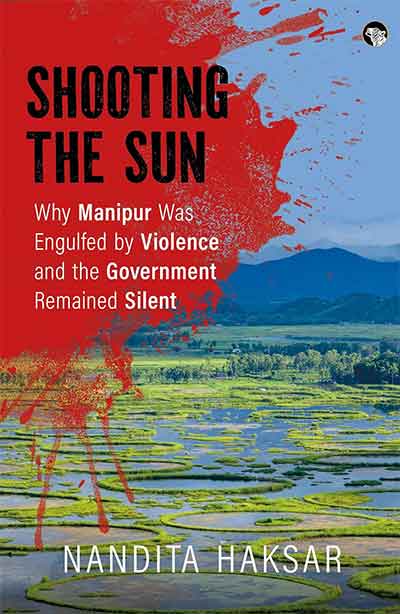
Manipur issue has been in the national headlines for the last three months. Responding to the opposition and pressure that was building up, the prime minister made a statement on the May 4 incident that he was angry with what had happened in Manipur. The point however is not in displaying anger but the state acting in a way that the situation is normalized. Manipur is just another instance where the state completely abrogated its responsibility of building peaceful conditions and maintaining social harmony among communities. Instead, the state became a perpetrator of violence.
The perpetration was because of the following reasons: –
Ignoring minority fears: In a multi-ethnic environment, where there are majority and the minority, there are always fears that exist among the minority. The inter-ethnic tensions have for long existed in North-east and so too in Manipur. State for performing a balancing act only needed a greater understanding of the concerns of the people more particularly the minority. In Manipur the fears of minority Kukis who mostly are in hills are related to land, resources, ST status and autonomy. In the imbalance of power – economic and political where meiteis are relatively better placed due to their larger presence in valleys, according an ST status to Meiteis only added to the fears of Kukis. It further enhanced among the minority Kukis a feeling that the dominant Meiteis through their ST status may penetrate into their spaces such as land and opportunities. There was insufficient groundwork done by the state to understand people’s concerns but was used by the ruling BJP state government to build meiteis as a potential long term support base for the political party.
Promoting Majoritarianism: The State acted as a representative of the majority meiteis and not that of the people of Manipur which also included all other people in Manipur. It started ‘othering’ the minority ‘kukis’. They were declared as one who are into poppy cultivation, undertake illegal drug trade and immigrants from the neighboring country Myanmar. According to Prof. Suan Hausing an authority on North-east issues, poppy cultivation is prevalent among all the communities in Manipur – Meiteis and Kukis included. However, as Kukis allege the “war on drugs” campaign was used to systematically target them. A ‘we’ vs ‘them’ narrative was built around them.
Polarizing for political gain: With the party interest and not the state role receiving the attention, the attempt has been to benefit by polarizing. It has resorted to polarize the people on the basis of ‘Hindu Meiteis’ vs ‘Christian Kukis’. While the conflicts in Manipur may be ethnic in nature, there is also a larger ploy to make it Hindu vs Christian issue by the BJP at the center. One can find the trollers supportive of BJP presenting the issue as one between Meitei Hindus and Christian Kukis. The ethnic issue is sought to be made into a religious and communal one in its larger narrative of ‘Hindu khatrein mein hain’. A divide and rule politics has been resorted to.
Police machinery made to act in biased manner: In earlier communal incidents such as in Gujarat it was seen that police were given instruction to let the mobs representing majority to ‘vent their anger’. In the current violence, the police has remained mere spectators in incidents of violence. Mob attacks of majority over minority has been merely witnessed by police machinery without being acted upon. This cannot happen without the direct instruction of the state machinery and it standing with one community ignoring the other. At times police handed over persons representing the minority community over to the mobs.
Fake news to build enmities and incite violence: The immediate incident which triggered the May 4 incident was a fake news which propagated that a Meitei woman had been raped, murdered and wrapped in a plastic cover. This was through using images from somewhere else in Delhi. This incident directly incited the mob of meiteis and made them resort to the inhuman act of parading kuki women naked and in rape incident. The fake news and propaganda factory created by the state in direct or indirect ways is contributing to building enmities between communities.
Women’s bodies as spaces of conflict: Referring to May 4 incident, the Chief Minister has stated that hundreds of such incidents have happened during the last few months. However, it is seen action against the accused has not been taken. Arrests happened only after there was large scale response to the video. Hence state has not acted when women’s bodies have been used as spaces for conflict.
It can be said that Manipur violence is a direct result of perpetration of violence by the state. While ethnic differences among the communities might still have existed and continued, the partisan role of the state have only widened the gaps among them. Attempting to introduce ‘Hindu Khatrein main hain’ narrative and putting one community against the other has only enhanced the problem in Manipur. The enmities created among communities may take a generation to heal. The ‘Senghol’ a supposed symbol of justice has not made the representative at central and state level to perform ‘Rajdharma’.
T Navin is an independent writer











































